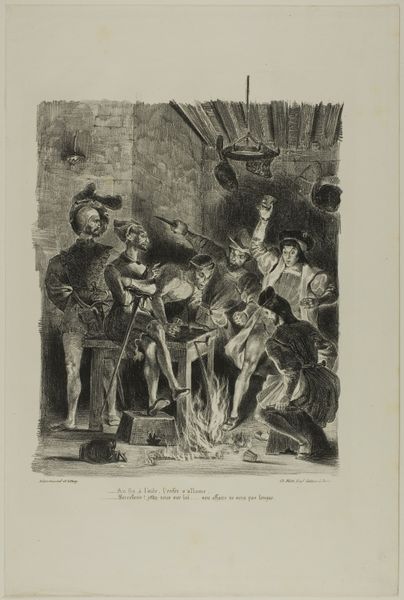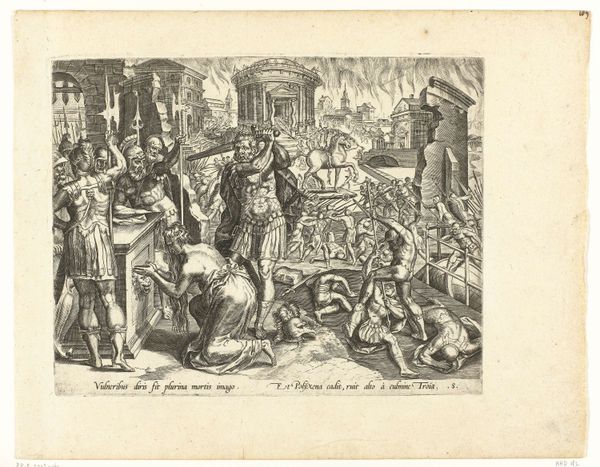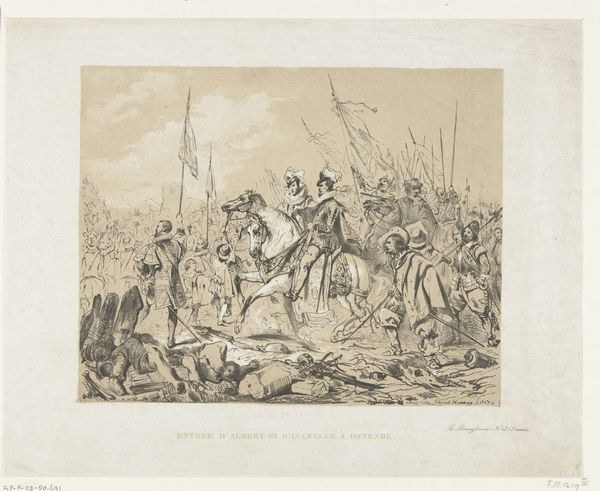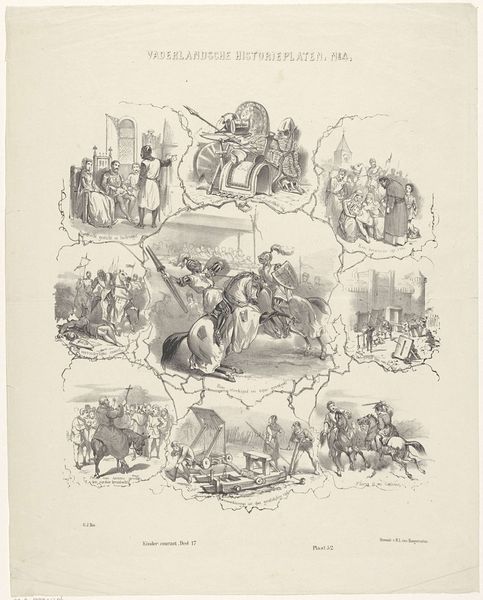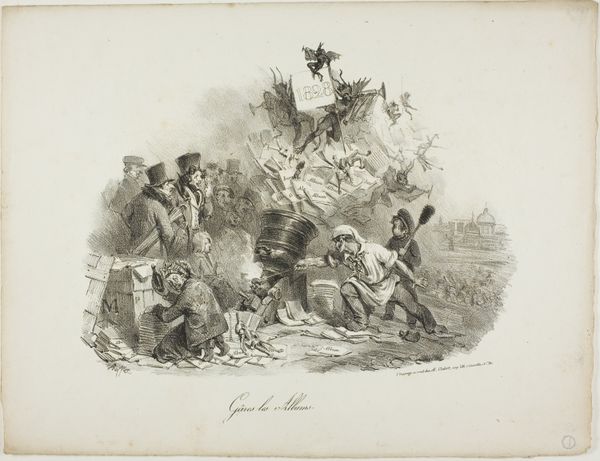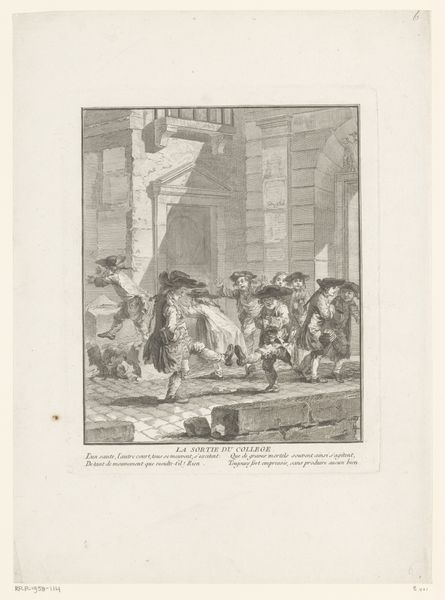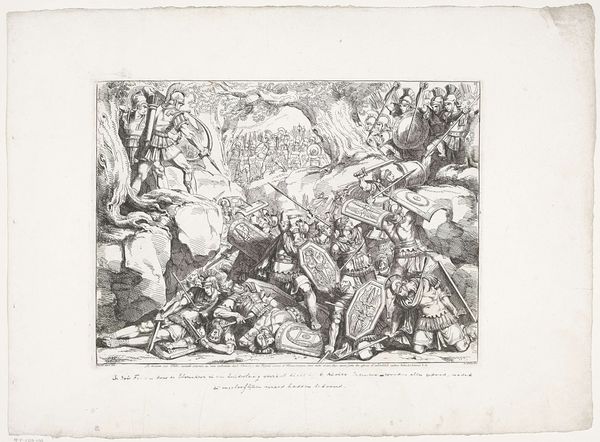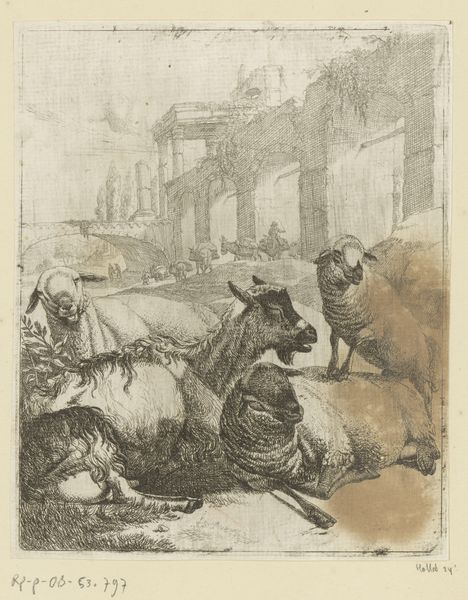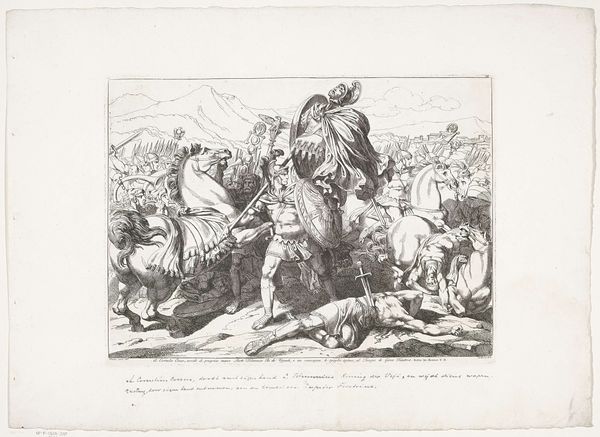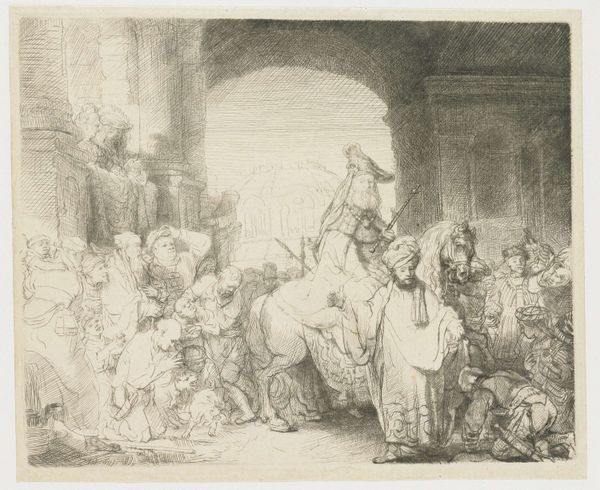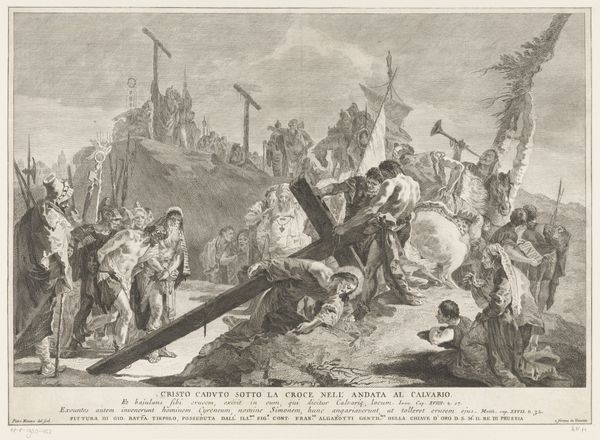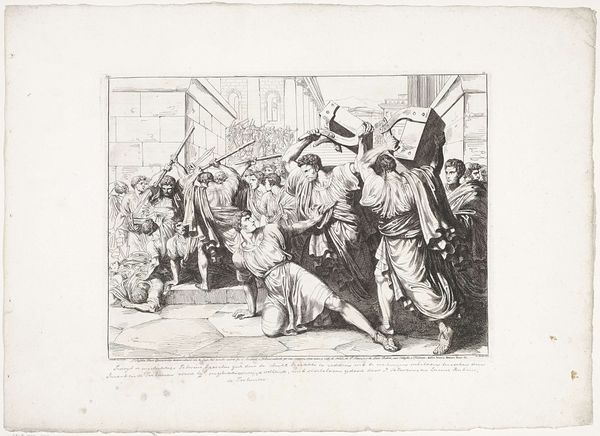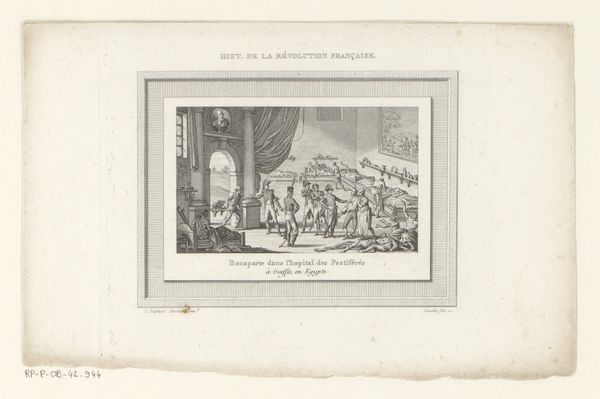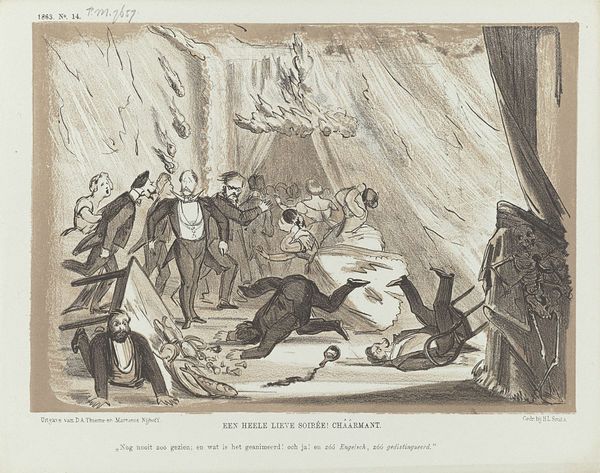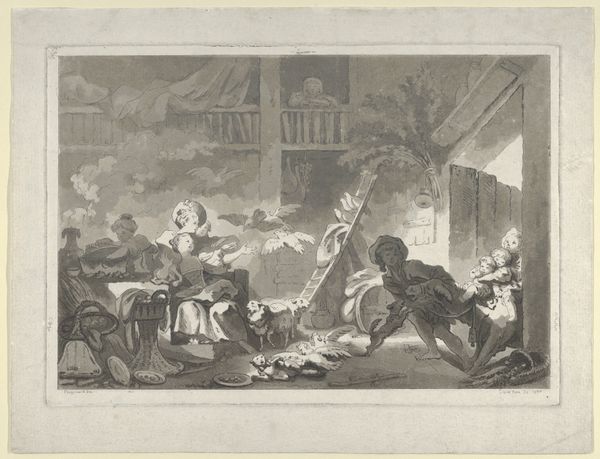
Dimensions: Image: 19.5 Ã 32.5 cm (7 11/16 Ã 12 13/16 in.) Plate: 23.2 Ã 34.8 cm (9 1/8 Ã 13 11/16 in.) Sheet: 27.8 Ã 43.8 cm (10 15/16 Ã 17 1/4 in.)
Copyright: CC0 1.0
Curator: This is a print by Thomas Rowlandson called "The Apostate Jack R. - The Political Rat Catcher," and it resides here at the Harvard Art Museums. What strikes you first about this image? Editor: Well, immediately I see a dense, almost claustrophobic scene. It's monochromatic, etched, and full of frantic activity, a swarm of rats surrounding a single figure crawling on the ground. Curator: Indeed, the rats symbolize political figures, and the "rat catcher" is meant to be a satirical depiction of a politician. The symbols are quite potent: the "Treasury" door, the list of names—it's a commentary on political maneuvering. Editor: I'm drawn to the technique. The etching feels rushed, almost journalistic. Look at the texture—the cross-hatching to create shadows, the way the ink sits on the page. This isn't just about the symbols, it's about the physical act of production and its relation to a specific time and place. Curator: Absolutely. The frantic lines mirror the political frenzy Rowlandson critiques. It's fascinating how the materials and process themselves become part of the message, amplifying the emotional and psychological weight. Editor: Right. The labor and materials are directly tied to the social critique. The print's availability surely made this satire accessible to a wide audience. It's not just a depiction, but a mode of political engagement. Curator: It certainly gives us a lot to reflect on, even today, regarding the relationship between politicians and their constituents. Editor: Definitely, and it’s important to consider both the symbolic language and the physical materiality of such a charged image.
Comments
No comments
Be the first to comment and join the conversation on the ultimate creative platform.
